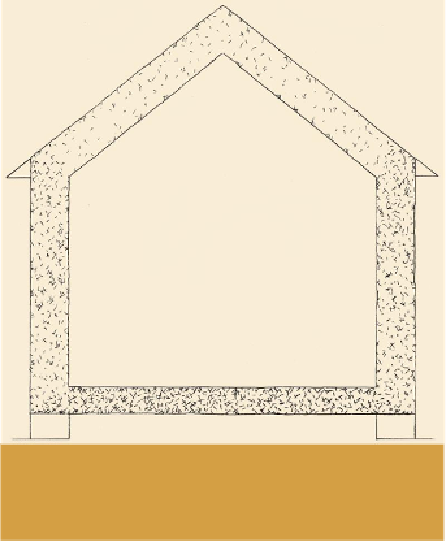Civil Engineering Reference
In-Depth Information
Figure 21.
The 'thermal envelope' describes the three-di-
mensional surface that contains the building's internal
heated volume. It is possible to cast the whole envelope
in hempcrete, as described on page 326.
This results in an arguably wasteful approach whereby the building is literally wrapped in
an airtight membrane, taped at joins and around protrusions. In conventional construction
methods this usually leads to the creation of a boarded-out void on the inside of the extern-
al walls, or even two - one to take the services and another to take the airtight membrane.
There are two problems inherent in this approach. The first is that it relies on an additional
product in the wall build-up to achieve what could be achieved through thoughtful detail-
ing. The second is that the placement of a physical airtight membrane, apart from being
more expensive than simply using robust detailing, means that the airtight line is often on
the interior face of the building. This means that the insulation, outside the airtight line, is
exposed to cold air moving through it. A better approach is to position the insulation
inside
the airtight line, so that warm air is retained in the insulation material.
Hempcrete has an advantage over other building materials when it comes to airtightness,
owing to its monolithic structure and its ability to be cast easily around protrusions and into
different shapes. However, it is important to understand that it is the thickness and mass

Search WWH ::

Custom Search